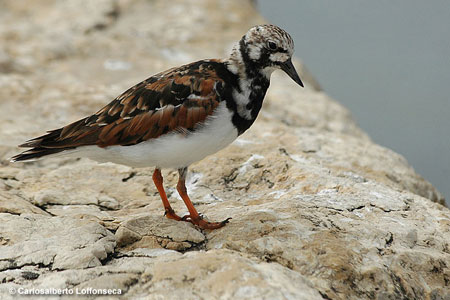
The range information provided in this section is of a general nature. Follow the links to each bird’s profile for range maps.
The three coasts are east coast, west coast and gulf coast.
On this page
Plovers – Family Charadriida
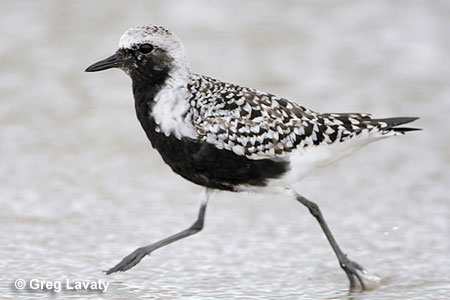
Black-bellied Plover in breeding plumage. Breeds in the far northern Canada and Alaska, winters along all three coastlines. Compare with American Golden Plover.
The Black-bellied Plover, also known as the American Golden Plover, is a migratory shorebird that breeds in the Arctic and migrates to temperate and tropical regions in the winter. It is a member of the Charadriidae family and is commonly found in coastal areas, mudflats, and wetlands.
The Black-bellied Plover is by its chunky, round body, short neck, and short, stubby bill. The bird’s plumage is typically gray on the upperparts and black on the underparts, with a white face and neck. In the breeding season, the Black-bellied Plover has a distinctive black belly that gives it its name.
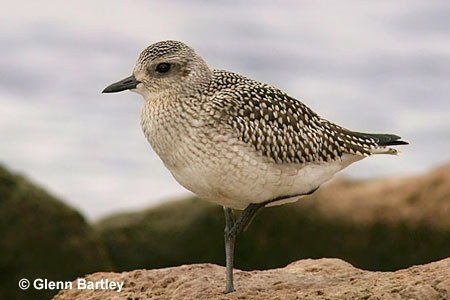
Black-bellied Plover in winter plumage. Compare with American Golden Plover.
Stilts and Avocets – Family Recurvirostridae
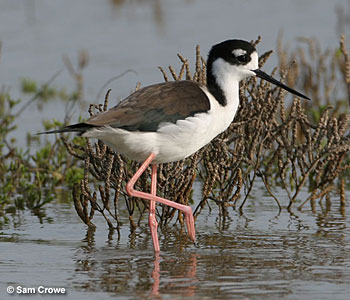
The Black-necked Stilt is common in many coastal areas. It will also nest in large sections of the interior United States and into southern Canada.
The Black-necked Stilt is a wading bird that is native to North and South America. It is a member of the Recurvirostridae family and is commonly found in wetlands, lakes, and shallow ponds.
The Black-necked Stilt is easily recognizable by its long, thin legs and distinctive black and white plumage. The bird’s body is white with a black back, and its neck and head are also black. It has a long, thin bill that is also black and is used for foraging in shallow water for small invertebrates and crustaceans.
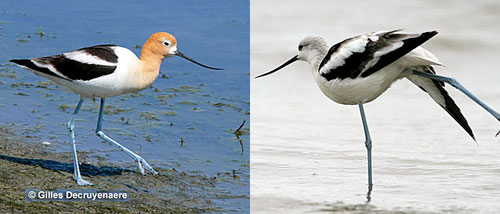
The American Avocet is found along coast lines. Breeds in large sections of the western United States and into Canada. Breeding plumage on the left.
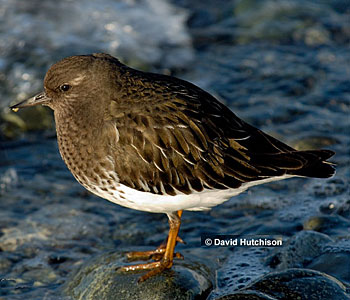
The Black Turnstone is found on the Pacific coast of the Untied States, north to Alaska. Compare with the Surfbird.
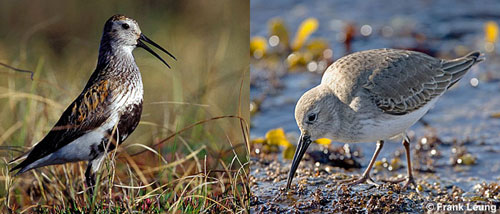
Dunlin: Left-breeding plumage, Right, winter plumage. Note fairly long, slightly droopy bill. Nests in far northern Canada and Alaska. Winters along all 3 coast lines.

The Ruddy Turnstone nests on the far northern tundra of Canada and Alaska. Winters along all three coast lines.
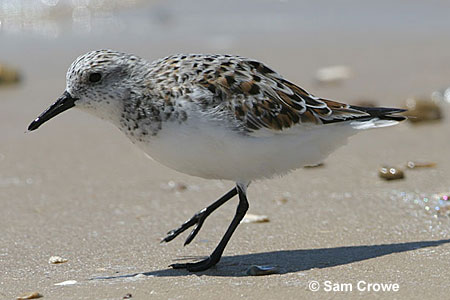
The Sanderling runs rapidly along shorelines, right at the surfs edge. Has been described as looking like a wind-up toy. Breeds in far northern Canada. Winters along all three coast lines.
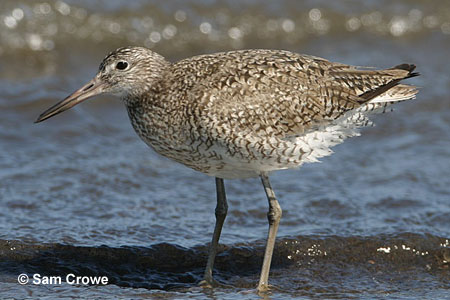
The Willet is common along all three coasts, winter only on west cost. Its call and bold black-and-white wing pattern when in flight are diagnostic. Breeds inland in western United States.
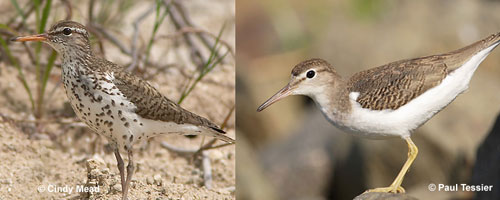
The Spotted Sandpiper is considered a shorebird, but is very widespread, nesting across large parts of North America from the Texas panhandle to Alaska. Winters in the southern U.S. and further south. Distinctive flight and bobbing behavior. Breeding plumage left, typical winter plumage, right.
Gulls, Terns and Skimmers – Family Laridae
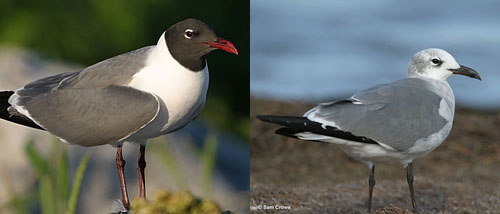
Laughing Gull: Left, breeding plumage. Right, winter plumage. Compare with Franklin’s Gull. Found along Gulf and East Coast.
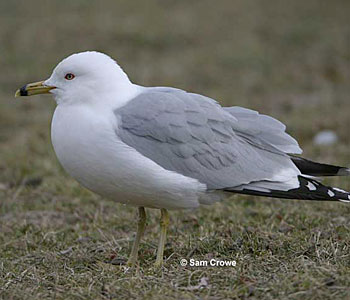
Ring-billed Gull, Adult breeding plumage. Winters across much of the United States.
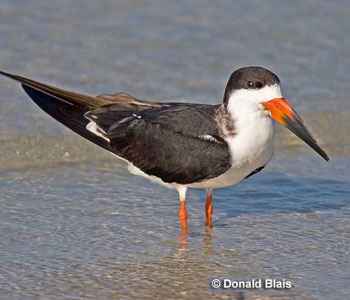
Black Skimmer. Gulf and East Coast, southern California coast.

